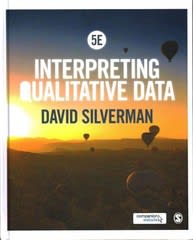Question
1. According to molecular maximizing theories of matching a. organisms always choose whichever response alternative is most likely to be reinforced at that time. b.
1. According to molecular maximizing theories of matching
a. organisms always choose whichever response alternative is most likely to be reinforced at that time.
b. organisms distribute their responses so as to maximize the amount of reinforcement they receive over the long run.
c. the local rate of response is calculated over just the time the organism devotes to that particular response.
d. matching is possible in the absence of momentary maximizing.
2. If pecking at key "A" results in reinforcement with a highly desirable reinforcer with a relative rate of reinforcement of 5, and pecking at key "B" occurs with a relative response rate of 0.2, you conclude
a. there is a response bias for the reinforcer provided by key "B."
b. there is a response bias for the reinforcer provided by key "A."
c. there are necessarily other response keys.
d. the generalized form of the matching law is incorrect.
3. What is the matching law? Provide an original EAB or applied example applying the matching law.
4. What is the difference between overmatching and undermatching?
5. Provide two differences in the procedure used to evaluate matching between confederate's gaze and participant's speech in Simon and Baum (2017) and Conger and Killeen (1974) studies.
6. What schedules of reinforcement did Gilbert-Norton, Shaan, & Shivik (2009) use in their study with coyotes and what did they examine in their study?
Step by Step Solution
There are 3 Steps involved in it
Step: 1

Get Instant Access to Expert-Tailored Solutions
See step-by-step solutions with expert insights and AI powered tools for academic success
Step: 2

Step: 3

Ace Your Homework with AI
Get the answers you need in no time with our AI-driven, step-by-step assistance
Get Started


